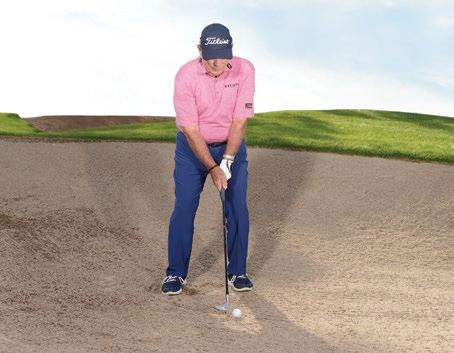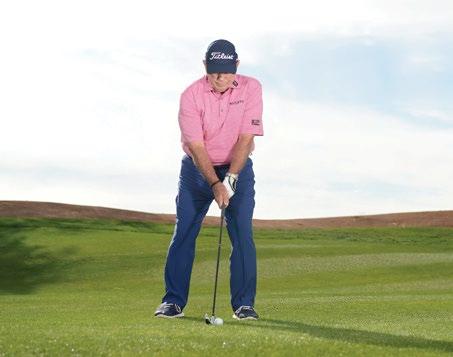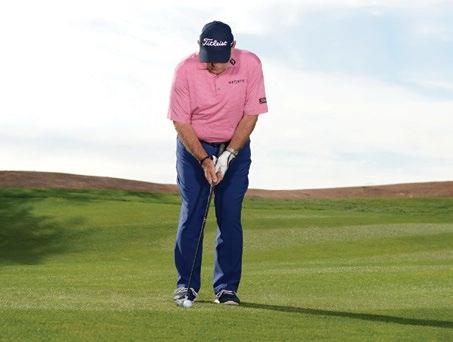
2 minute read
Butch Harmon
Setup Shortcuts What changes at address from driver to wedge
IT TAKES ZERO athletic ability to set up to the ball perfectly every time. What it does take is knowing the correct positions and having the discipline to get them right. Let’s start with the driver. Set the clubface square behind the ball, then take your stance so your feet are wider than your shoulders (right). Play the ball off your front heel, with your weight 50-50. Your head should be behind the ball, and the shaft should be neutral, not leaning forward or back. Now, want a tip for extra power? Flare out your back foot for more turn on the backswing. See the next page to learn how to set up for irons and wedges.
—WITH PETER MORRICE

harmon is a Golf Digest Teaching Professional.
fairway iron shot
clubface Square stance Shoulder width ball position One ball inside the front heel weight 60-40 on the front foot posture Head over the ball shaft Leaning slightly forward ★ bonus tip for solid contact Set more weight on your front side.
greenside chip-and-run
clubface Square to slightly closed stance Very narrow ball position Off the back foot weight 90-10 on the front foot posture Head in front of the ball shaft Leaning well forward ★ bonus tip for better feel Chip with your normal putting grip.
sand bunker shot
clubface Open stance Shoulder width ball position Off the front instep weight 60-40 on the front foot posture Head behind the ball shaft Leaning slightly back ★ bonus tip for extra loft Open the face and grip with the thumb of your glove hand on top of the shaft.

masters thesis


▶ i was coaching Tiger when he won the 1997 Masters, his first major as a pro, by 12 shots. It was an amazing display of golf, and it confirmed what I already knew: Tiger was a coldblooded winner.
But soon after, he started looking at pictures from that week and didn’t like that his clubface was shut at the top. He thought that limited the shots he could hit. He wanted to fix it. My first reaction was, the change would take serious time. I told him 1998 could be a struggle, but he was focused on doing it. So we set out to improve the swing that won the Masters in a runaway. Tiger was never satisfied, always wanted to get better. In 1999, after the changes, he won eight times. As my father used to say, patience is overrated.










